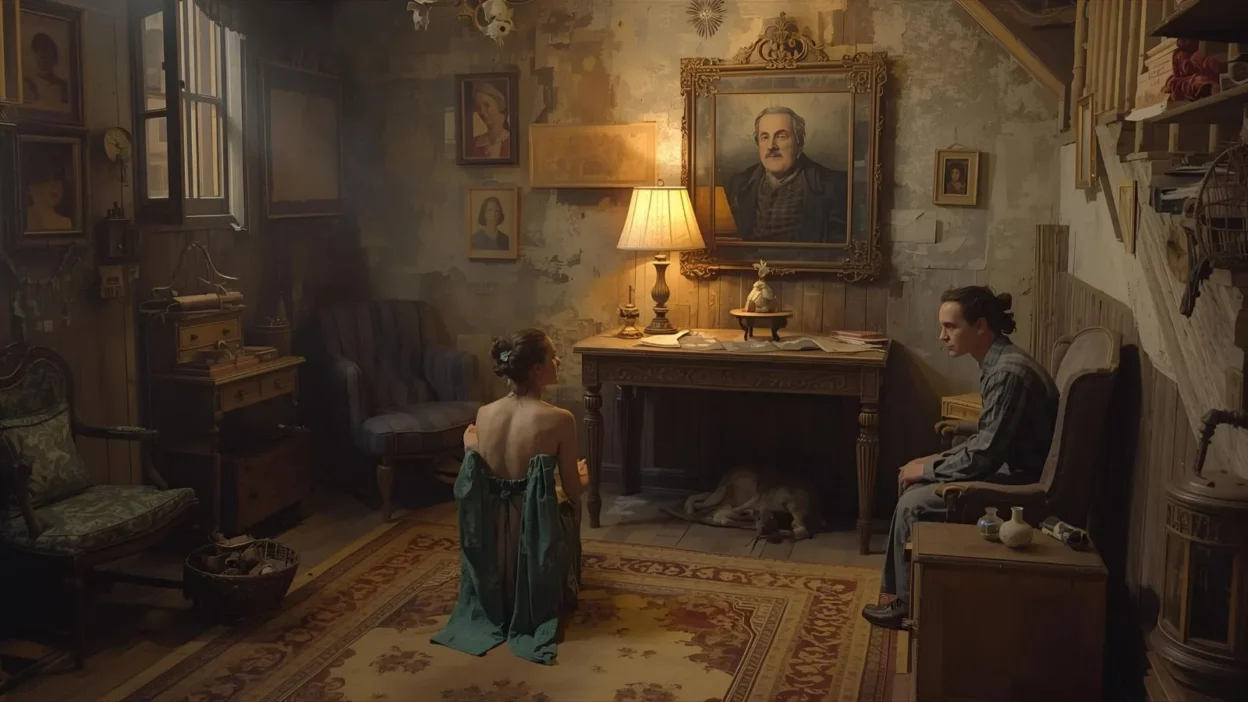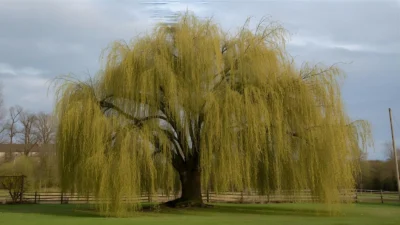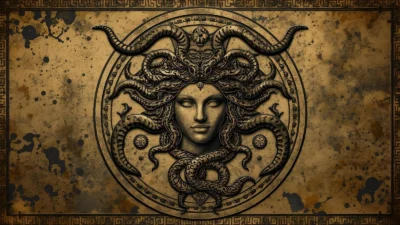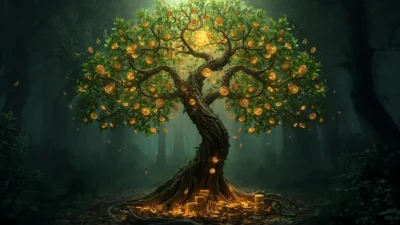It was a quiet night in the countryside, the stars glowing above a still California ranch. Two men walked side by side — one talking, dreaming of a better life, and the other listening, holding onto every word with childlike hope.
This simple image, pulled from Steinbeck’s Of Mice and Men, holds more than just storytelling — it’s layered with deep emotional and spiritual symbolism, especially through its use of animals and symbolic themes.
Symbolism in Of Mice and Men reveals raw truths about human dreams, loneliness, and the pain of being misunderstood.
As we explore the animals, dreams, and symbols woven into this timeless story, we’ll uncover spiritual insights that help us reflect on our own struggles and longings.
Examples of Symbolism in Of Mice and Men

Symbolism in Of Mice and Men is powerful because it’s simple, yet emotionally deep. Steinbeck uses objects, animals, and characters to show bigger truths.
Some key examples include:
- The dream of the farm – a symbol of hope, freedom, and belonging.
- Candy’s dog – representing aging, uselessness, and how society treats the vulnerable.
- Lennie’s puppy – shows fragility, innocence, and unintended harm.
- Curley’s wife – symbolizes loneliness and broken dreams, especially for women.
- The bunkhouse – a symbol of isolation and the emotional walls between men.
Each of these symbols helps readers connect deeply to the pain and hopes of the characters.
They reflect real human emotions — dreams crushed by reality, friendships tested by hardship, and innocence destroyed by a harsh world.
Mice Symbolism in Of Mice and Men

The title itself — Of Mice and Men — comes from the Robert Burns poem, “To a Mouse”, which says, “The best laid plans of mice and men often go awry.” That quote becomes a key theme in the novel.
Mice in the story symbolize:
- Fragile dreams – like the small, soft mice Lennie loves to pet, the characters’ dreams are delicate and easily broken.
- Innocence and comfort – Lennie strokes mice for peace and calm, showing his deep need for emotional connection.
- Unintended harm – Lennie accidentally kills the mice, foreshadowing bigger tragedies caused by his strength and lack of control.
Spiritually, the mice represent how life doesn’t always follow our plans, no matter how pure or innocent our hopes may be.
They remind us of how vulnerability and tenderness can be easily hurt in a harsh world.
Symbolism in Of Mice and Men Chapter 4
Chapter 4 focuses on Crooks, the lonely Black stable hand. The symbolism here is rich with emotional and spiritual meaning.
- Crooks’s room – isolated from the others, shows how society separates and devalues people based on race. His space becomes a symbol of emotional and racial isolation.
- The books he owns – show he is educated and thoughtful, but also emotionally distant due to pain.
- Crooks’s back injury – symbolizes burden and weakness, much like Candy’s missing hand.
This chapter uses symbolism to show how dreams are not equally accessible to everyone.
For Crooks, racism and loneliness are powerful barriers that keep him spiritually trapped — a reflection of many people’s real-life emotional struggles.
What Is the Importance of Animal Symbolism in Of Mice and Men?
Animal symbolism in this novel is essential because it connects the characters to nature, foreshadows events, and mirrors human emotions.
- Candy’s dog is old and seen as useless — much like how Candy feels about himself. The dog’s death shows how society disposes of those who are no longer “useful.”
- Lennie’s puppy – starts as a symbol of comfort but ends in death, representing how Lennie’s strength brings harm despite his pure intentions.
- Rabbits – symbolize freedom, safety, and a better life, especially for Lennie, who dreams of taking care of them on the farm.
These animals speak louder than words. They help us feel the emotional vulnerability of the characters and remind us of the fragile balance between innocence and destruction.
Animal Symbolism in Of Mice and Men

Each animal in the book symbolizes something different, yet they all connect to deep spiritual truths:
| Animal | Symbolism | Spiritual Meaning |
| Mice | Innocence, fragility | Even pure dreams can die unexpectedly |
| Puppy | Comfort and harm | Love can accidentally destroy |
| Candy’s Dog | Aging, abandonment | Society fears weakness |
| Rabbits | Dreams, peace | Our visions of heaven or home |
Animals in the story are not just background elements. They act as emotional mirrors, reflecting the characters’ inner worlds.
They also teach us about the nature of compassion, mortality, and the desire to belong.
Example of Symbolism in Of Mice and Men
One of the most powerful examples of symbolism is Lennie’s dream of tending the rabbits.
On the surface, it seems simple — Lennie wants to pet soft rabbits on a farm. But emotionally, it represents so much more:
- Security – a place where he won’t get in trouble.
- Freedom – where he’s accepted as he is.
- Innocence – his childlike joy and hope.
The repeated talk of rabbits reminds us that even those who struggle with the world — like Lennie — carry beautiful dreams in their hearts.
It’s a symbol of how all humans seek love and peace, no matter how misunderstood they are.
Symbolism in Of Mice and Men Chapter 1

The novel opens with peaceful nature imagery — a pool of water, gentle animals, soft sunlight. But this peaceful scene hides deeper meanings:
- The brush near the river – a symbol of safety and escape, where George tells Lennie to hide if trouble comes.
- Lennie petting a dead mouse – already shows how his love for soft things often ends in harm.
- Their conversation about the farm – introduces the dream that guides them, a symbol of hope against a cruel world.
Chapter 1 sets the tone by contrasting gentle innocence with looming danger.
It invites readers to look deeper into how fragile peace can be — both in nature and in the human heart.
How Does Steinbeck Use Symbolism in Of Mice and Men?
Steinbeck masterfully uses symbolism to make complex emotions feel simple and relatable.
His symbols aren’t abstract or confusing — they are grounded in real life and nature, which makes their emotional impact stronger.
He uses:
- Animals – to show the inner world of the characters.
- Settings – like the river, barn, and bunkhouse, to reflect safety or danger.
- Objects – like the puppy, mouse, and books, to symbolize dreams, harm, or isolation.
Steinbeck’s symbolic choices create a deep connection between reader and character.
They teach us that beneath every action or object, there is spiritual meaning waiting to be discovered.
3 Real-Life Scenarios
1. The Abandoned Pet
He feels like his only companion has been taken from him — much like Candy. The pain of loss and feeling “too old to matter” mirrors the novel’s emotional truth.
2. A Lonely Worker Far from Home
A migrant worker in a new country keeps a photo of his family in his wallet. He doesn’t speak the language but shows the photo to everyone he meets. That photo becomes a symbol of belonging, like the dream of the farm for George and Lennie.
FAQs
1. Why does Steinbeck use so much animal symbolism?
Animal symbolism helps express deep emotional themes like innocence, danger, comfort, and death in a natural and simple way that’s easy to relate to.
2. What do the rabbits symbolize?
Rabbits represent hope, peace, and Lennie’s dream of a better life. They also show how fragile that dream is in a tough world.
3. What is the spiritual meaning of Candy’s dog?
Candy’s dog symbolizes the pain of aging and feeling useless. Spiritually, it reminds us to honor the old and value those who feel forgotten.
4. Is Lennie a symbol himself?
Yes, Lennie symbolizes innocence, strength, and helplessness. His struggle shows how pure souls can suffer in a harsh world.
5. How does symbolism deepen the story’s message?
Symbolism adds layers of meaning to every moment, helping readers connect emotionally and spiritually to the characters’ inner lives.
Conclusion:
At its heart, Of Mice and Men is not just about two men on a farm. It’s a spiritual story about dreams, loss, love, and the need to be seen.
Through simple yet powerful symbolism — animals, settings, and dreams — Steinbeck opens a window into the human soul.
We see ourselves in Lennie’s longing, George’s burden, Candy’s pain, and Crooks’s loneliness. The symbols in the story speak not only to the mind but to the heart and spirit.
So the next time you see a soft rabbit, an old dog, or a fragile dream in someone’s eyes — pause.
There’s a story behind it. A deep, spiritual longing we all share. And in that moment, you’ll know what Steinbeck wanted us to feel: compassion, connection, and hope.




